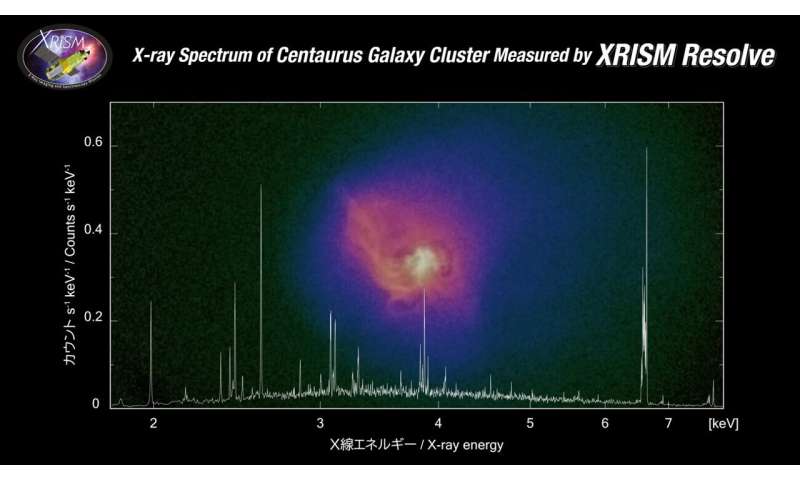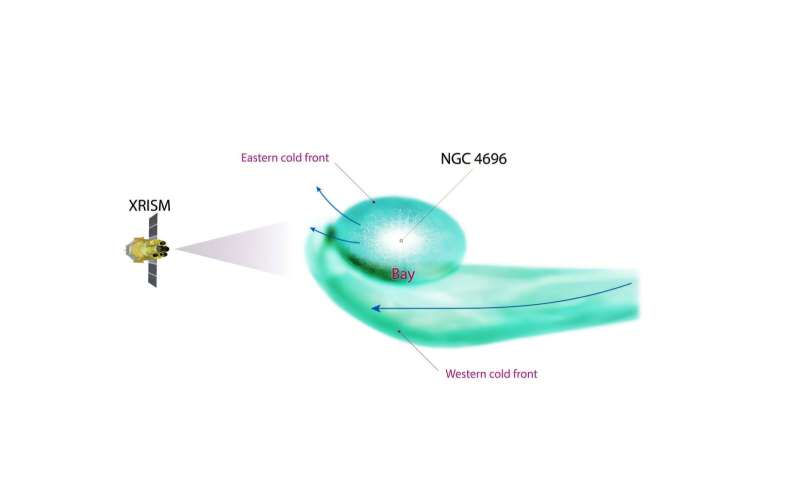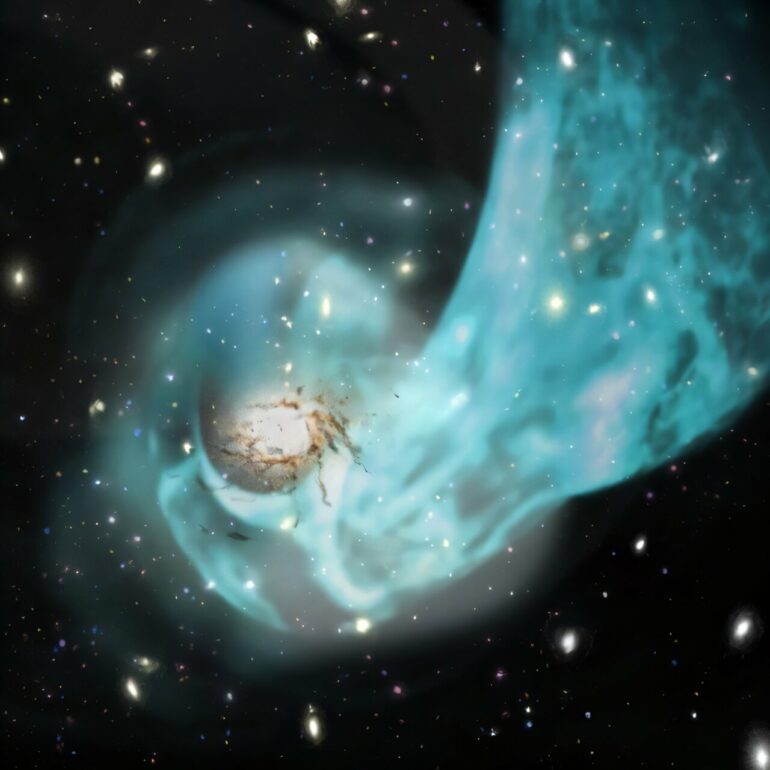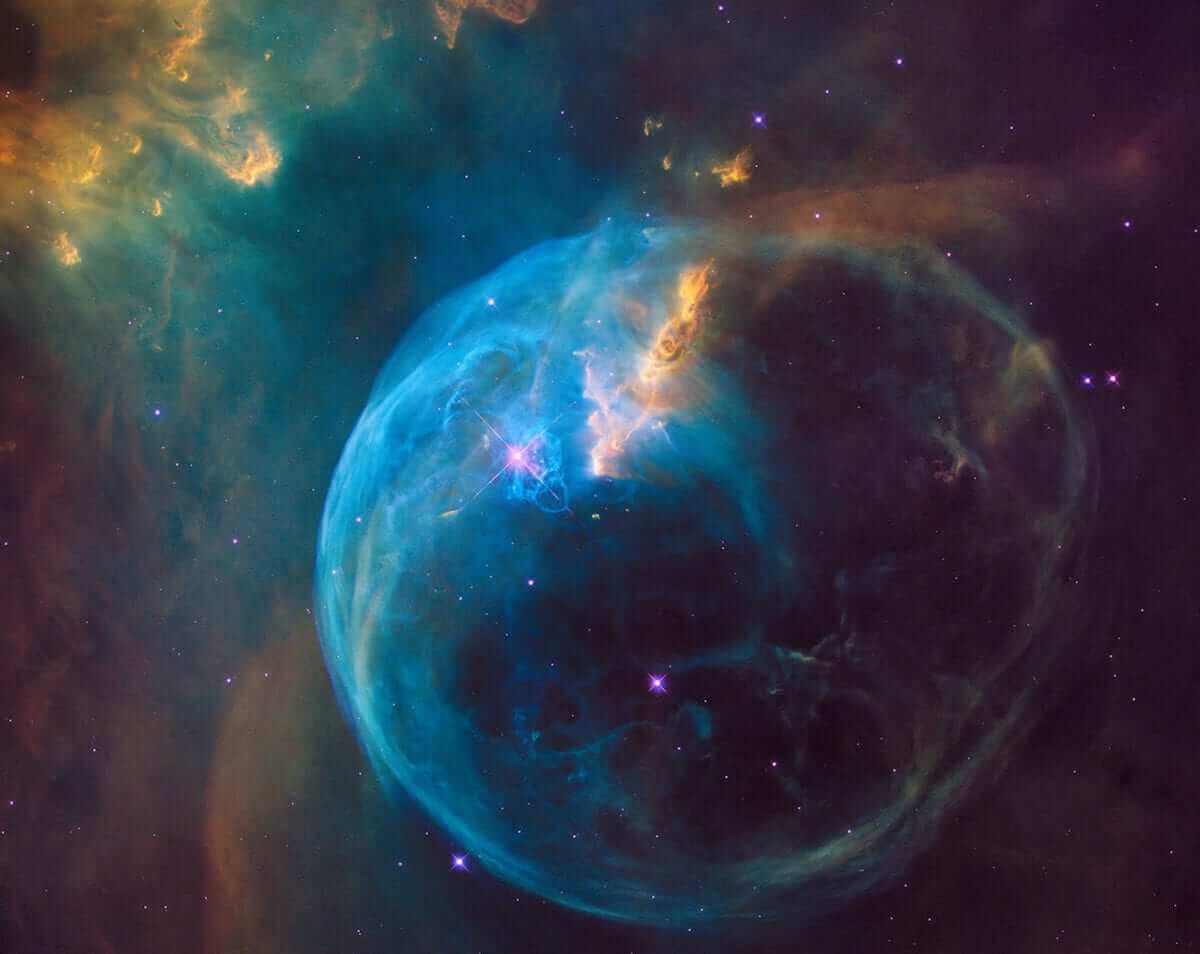The XRISM collaboration has discovered flows of hot gas in the core of the Centaurus Cluster. By comparing state-of-the-art X-ray measurements from the XRISM satellite with numerical simulations, they showed this is evidence for collisions between galaxy clusters, causing gas inside to “slosh.” This solves the longstanding mystery of how cluster cores stay hot, and sheds light on how our universe continues to evolve.
Astronomers have long envisioned how vast gravitational forces between galaxies and galactic clusters, colossal cosmic assemblies bound by dark matter, drive their growth through mergers and collisions. However, direct evidence for this has been lacking.
The international XRISM (X-ray Imaging and Spectroscopy Mission) collaboration has observed the Centaurus galaxy cluster with the XRISM satellite, launched in 2023 by the Japan Aerospace Exploration Agency (JAXA); the on-board spectrometer, called Resolve, features groundbreaking precision spectroscopy, allowing accurate identification of gas velocities.
Looking at the core of the Centaurus Cluster, including the central galaxy NGC 4696, they discovered for the first time a bulk flow of hot gas traveling about 130 to 310 kilometers per second in the line-of-sight from Earth. They were also able to create a map of how the velocity varies at locations away from the center.
Making comparisons with simulations, a task team led by Professor Yutaka Fujita from Tokyo Metropolitan University and Associate Professor Kosuke Sato from the High Energy Accelerator Research Organization found that this is consistent with the “sloshing” of the hot gas, also known as the intracluster medium (ICM), caused by collisions with other galactic clusters. This is the first direct evidence for this kind of sloshing, validating a long-hypothesized picture of the evolution of the universe.

X-ray spectrum of the Centaurus Galaxy Cluster measured with the XRISM Resolve spectrometer. The spectrometer on the XRISM satellite can tell peaks apart with unparalleled resolution. © JAXA

Schematic of measurement by XRISM. Galaxy NGC 4696 at the center of the cluster is surrounded by different gas flows on either side with respect to our line of sight. © JAXA

Intergalactic “sloshing” of hot gas. Collisions between clusters generate a “sloshing” effect for the intracluster medium, causing vast flows of gas that cause the content of the clusters to oscillate. © JAXA
It also solves a long-standing mystery for astronomers about how such bright X-ray-emitting gas stays hot. Theoretically, such intense radiation should entail a loss of energy, leading to cooling of the gas; this is known as radiative cooling. The time scale over which this cooling should occur is shorter than the age of the cluster, but observations so far suggest that, somehow, the gas manages to stay hot.
These new findings present an elegant solution to this problem. If the gas in the cluster core can slosh, involving vast bulk flows of gas to-and-fro around the center, energy can be transported to the core through a mixing process, keeping the gas hot and the emissions bright. The team’s results have now been published in the journal Nature.
These unprecedentedly precise measurements are a significant leap forward in our understanding of the formation and evolution of galactic clusters. With years still left in the XRISM mission, the world of astrophysics eagerly awaits more insights into the changing nature of the universe.
More information:
Kokoro Hosogi et al, The bulk motion of gas in the core of the Centaurus galaxy cluster, Nature (2025). DOI: 10.1038/s41586-024-08561-z
Provided by
Tokyo Metropolitan University
Citation:
‘Sloshing’ from celestial collisions solves mystery of how galactic clusters stay hot (2025, March 10)



